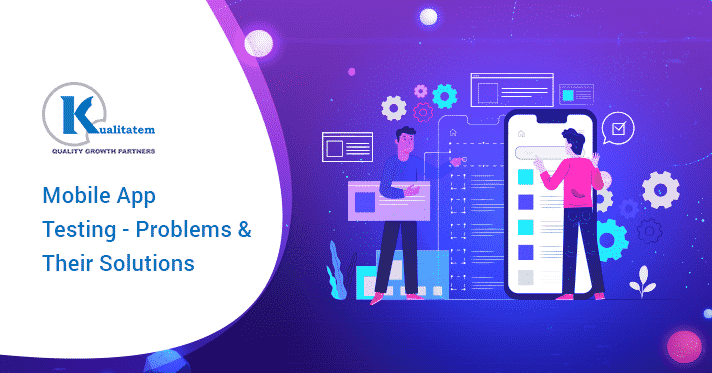Mobile App Testing – Problems & Their Solutions

- September 7, 2020
- HibaSulaiman
You have spent weeks developing a mobile app that you can’t wait to be released finally. Everything is ready for launch from the development team and they are excited about releasing the new features. The level of excitement increases as users start downloading this app from different app stores around the globe. However, once the wait is over, people start using the app and there are a few bug reports coming in. The immediate reaction would be to question the QA and development teams to inquire about these bug reports. Upon inquiring, you might realize that teams either did not have much time and budget for testing, or they performed testing only on a few devices. So to realize that the application is already live for a few days and major issues have captured the users’ attention, increasing the number of negative reviews on the app store.
So what exactly do you think has gone wrong? How could have this situation been avoided? Or how to address the underlying issues now? QA managers, product owners, and CTOs are the responsible stakeholders who have to face such problems and prepare to deal with them when releasing apps. In fact, in a mobile application testing company, the QA process needs to be reviewed and the potential bottlenecks to a successful release should be avoided.
Device Fragmentation Issues – DevOps is the Solution
Device fragmentation is a huge issue that can occur in the mobile app testing processes. It is typically caused due to a number of variations in the OS and OS versions, browser versions, different screen sizes, etc. So testing an app till it meets the quality with respect to all types and combinations of device variations, requires ample time and efforts. To increase the app development speed, QA teams can use the Continuous Integration (CI) and Continuous Development (CD) approach that supports the DevOps environment. It is a testing approach where software testing begins earlier in the development lifecycle. In the CI, code is committed to a central server, thus testing takes several times and developers do not need to wait for a longer period of time to resolve the issues. Bug detection becomes easier and thus resolving these bugs is much cheaper.
Continuous Testing Process to Ensure Software Quality
In the continuous testing approach, testing is performed at all stages of the development lifecycle i.e. planning, deployment, monitoring, etc. Since software testing begins from the early stage and occurs frequently, bug detection becomes easier. Continuous testing reduces the cost, time, and efforts of the QA teams. In order to achieve efficient continuous testing, QA teams need to choose automation testing tools and frameworks, a systematic CI/CD pipeline and a modern testing environment like mobile DevOps and CI. With continuous testing, teams can increase the speed of the app development process without compromising on quality.
Evolving Dynamics & Cloud Device Lab
Cloud device labs are beneficial for mobile app testing in different ways. It allows smooth parallel testing and saves cost, time, and efforts. The dynamics of the mobile app industry keep changing frequently, with respect to new versions and OS, which can only be tested with the help of a cloud device lab. It can also be helpful in collaborating with teams that are working remotely. In addition, they can also be accessed at any time of the day.
Increase Speed with Parallel Testing
Keeping in mind the dynamic nature of the mobile app industry, it is important to deliver faster results while ensuring quality. As the OS versions and mobile versions keep upgrading and changing, QA teams need to ensure that an app supports multiple platforms. To resolve this issue, QA teams need to test an app continuously, until it meets all types and combinations of device variations. So, with the help of parallel testing in a device lab, QA teams can test an app on a wide range of mobile devices. It boosts the speed of testing and saves time and effort for the testers.
Different Types of Mobile Apps
There are different types of mobile apps such as a native app, web app, or hybrid app. Testing each type of application requires different skills and expertise, as its implementation is also different from one another. Since we know that each app behavior is different from one another in terms of installation and functionality, the testing processes and coverage is different too. Thus, it is important to test on various devices and platforms before releasing the app into the production phase.
Conclusion
Today, more than 90% of millennials rely on mobile applications for their daily tasks such as bill payment, communication, online shopping, etc. User expectations towards mobile apps are progressive in nature which has led to increased competition between organizations dependent on mobile apps. Thus, organizations are in search of a mobile application testing company that provides faster, and convenient solutions to develop high performing mobile apps.
It is quite challenging to develop high performing apps since the ever-evolving nature of mobile devices and their OS, high-speed mobile app development, 24/7 accessibility, a collaboration between development, testing, and operations teams. There are different hurdles that mobile app testing firms face, but the above solutions can help teams in developing apps with better quality and performance.











